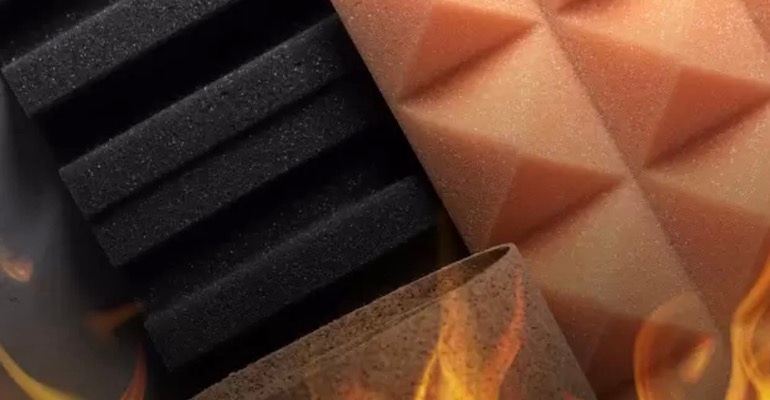Halogen-free Flame-Retardant Additive Introduced for PE Foam
The new additive from Tosaf delivers performance at low concentrations to crosslinked and non-crosslinked polyethylene (PE) foam.
May 11, 2023

Tosaf has developed a new halogen-free flame-retardant additive (HFFR) — FR9185PE — for crosslinked and non-crosslinked polyethylene foam. Even at low concentrations, it helps prevent the spread and acceleration of fire, facilitating compliance with demanding fire-protection standards in industries such as automotive, construction, pipe insulation, and shipment packaging.
Growing demand for PE foam
Adoption of PE foam is advancing steadily on account of its corrosion resistance, dimensional stability, and thermal insulation in a range of applications, including acoustic and mechanical dampers as well as flooring, pipe insulation, and decorative elements. However, its low fire resistance requires the addition of flame retardants. Here, the trend is toward halogen-free formulations for environmental and safety reasons, especially in Europe and the United States. Tosaf has expanded its range of flame-retardant masterbatches to include appropriate materials that do not impair the properties of the foam, but at the same time enable compliance with international fire-protection standards.
Masterbatch is efficient at low concentrations
As the latest addition to its HFFR masterbatch range, grade FR9185PE is suitable not only for non-crosslinked but also for crosslinked PE foams. In the event of fire, its phosphorus-based active ingredient initiates a gaseous mechanism that stops combustion by reacting with the resulting free radicals. Other halogen-free systems that rely on the formation of a protective layer that suffocates the fire or on water vapor to cool the combustion require significant dosage. Only 10 to 15% dosage of this product is required to achieve performance similar to halogen-based systems that typically need 30% to 60% dosage.
Further, grade FR9185PE ensures effective dispersion in the foam and does not negatively affect foam nucleation or crosslinking levels, resulting in a consistent cell structure and a high-quality foam product with preserved mechanical properties and thermal stability.
Halogen-free flame retardants are relatively new to the market. Their development is complex, and it is quite challenging to match the diversity offered by halogen-based products, making FR9185PE EU a truly innovative material, according to Tosaf.
For applications that still demand halogen-based products, Tosaf’s portfolio has options:
Chlorine-based flame retardants such as FR9327PE offer good performance, are cost-effective, and can be used for non-crosslinked PE foams. They are not suitable for crosslinked PE, and have limited thermal stability.
Brominated flame retardants, such as FR1653PE, are suitable for all types of PE foams. They provide thermal stability, perform at a level that meets stringent fire standards, and do not affect the properties of the foamed product.
New production plant
To meet growing demand for flame retardants, Tosaf has invested in a new, state-of-the-art production facility. A laboratory is available for testing in accordance with a range of fire standards, including a cone calorimeter for full combustion analysis. In addition, the company has established pilot lines that simulate real production conditions and allow flame-retardant additives to be tailored for specific applications.
About the Author(s)
You May Also Like




